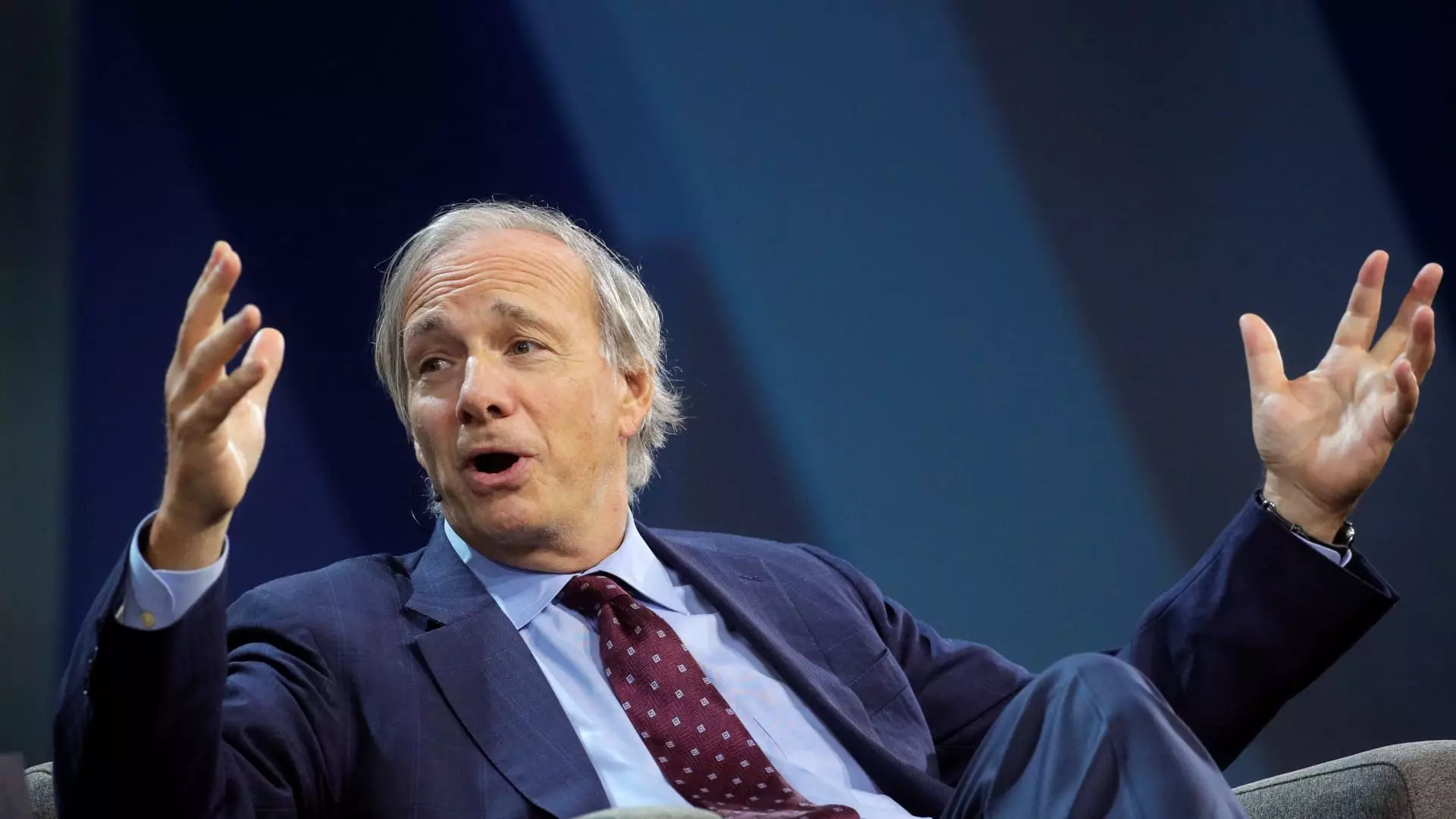The U.S. economy is at a pivotal juncture, grappling with the aftermath of substantial debt accumulation amid ongoing monetary policy adjustments by the Federal Reserve. Ray Dalio, the billionaire founder of Bridgewater Associates, has raised concerns about the implications of this debt on the economic landscape. As the Federal Reserve announces its first interest rate cut since the pandemic’s onset, Dalio’s observations provide crucial insights into the challenges that lie ahead for policymakers and the economy as a whole.
The Federal Reserve’s recent decision to lower the federal funds rate by 50 basis points, bringing it down to a range of 4.75% to 5%, marks a notable shift in the central bank’s approach. This adjustment influences various financial products, from mortgages to credit cards, ultimately impacting consumers and businesses alike. However, Dalio emphasizes the precarious balancing act faced by the Fed: maintaining high enough rates to satisfy creditors while ensuring that these rates do not become burdensome for borrowers. This delicate equilibrium is increasingly challenging, particularly in light of the enormous debt burdens facing the U.S. economy.
The increasing national debt – currently exceeding $35 trillion – has led to daunting interest payments that the U.S. Treasury Department reported to surpass $1 trillion this year alone. This surge in debt servicing costs is compounded by a growing budget deficit, which is projected to approach $2 trillion by the end of the fiscal year. With such figures, the Fed’s room for maneuver is narrowing, and Dalio’s insights highlight the urgent need for a sustainable approach to debt management.
Dalio’s concerns extend beyond U.S. borders, as he references the unprecedented levels of debt being generated globally by governments, largely financed and monetized by central banks. This widespread accumulation of debt, driven by pandemic-era stimulus measures, poses a risk not only to national economies but to the global economic order. Dalio speaks of the magnitude of debt as something “never seen in my lifetime,” suggesting a fundamental shift in economic realities.
While the outlook does not predict an imminent credit crisis, Dalio sees significant depreciation in the value of this debt through artificially low real interest rates. Consequently, the value of government securities may stagnate, and pressure will mount on the Fed to intervene or face rising interest rates due to insufficient demand for newly issued debt.
As we look ahead to the 2024 presidential election, Dalio warns that debt sustainability may not receive the attention it deserves from political leaders. His assertion that neither former President Donald Trump nor Vice President Kamala Harris may prioritize addressing the mounting pressures of national debt presents a concerning scenario. Dalio predicts that without proactive measures, the trajectory of U.S. debt could increasingly resemble Japan’s long-standing strategy of maintaining low interest rates.
In Japan, the central bank has historically kept rates at artificially low levels, leading to significant valuations of government bonds. Dalio notes that Japan’s monetary policy resulted in substantial depreciation of its currency and a plummeting bond value. The risks of adopting similar measures in the U.S. prompt questions about the long-term implications for economic stability and currency valuation.
In circumstances where demand for government debt falters, interest rates could either increase or require intervention from the Fed to purchase more assets. Dalio warns that such intervention could mark a significant downturn, rippling through financial markets. In a fiat monetary system, where debt is monetized by central banks, the implications for currency valuation could be severe.
Drawing parallels to historical economic upheavals, such as the 1970s and the tumult of the 1930s to 1945 period, Dalio suggests that the modern economy may also succumb to forces that drive currencies down. As the world navigates this uncertain landscape, the collective behavior of global currencies will be under scrutiny, as currencies are often judged against each other.
Ray Dalio’s analysis of the U.S. economic terrain highlights a complex interplay of debt, monetary policy, and global economic signals. The Federal Reserve has a challenging road ahead, tasked with crafting a strategy for managing debt while ensuring economic stability. As the U.S. grapples with the repercussions of its financial decisions amidst unprecedented levels of debt, the insights shared by Dalio serve as a crucial reference point for stakeholders aiming to comprehend and respond to this multifaceted crisis. The lasting effects of these policies could shape the economic future for years to come, making it imperative for policymakers to approach debt management with foresight and prudence.

